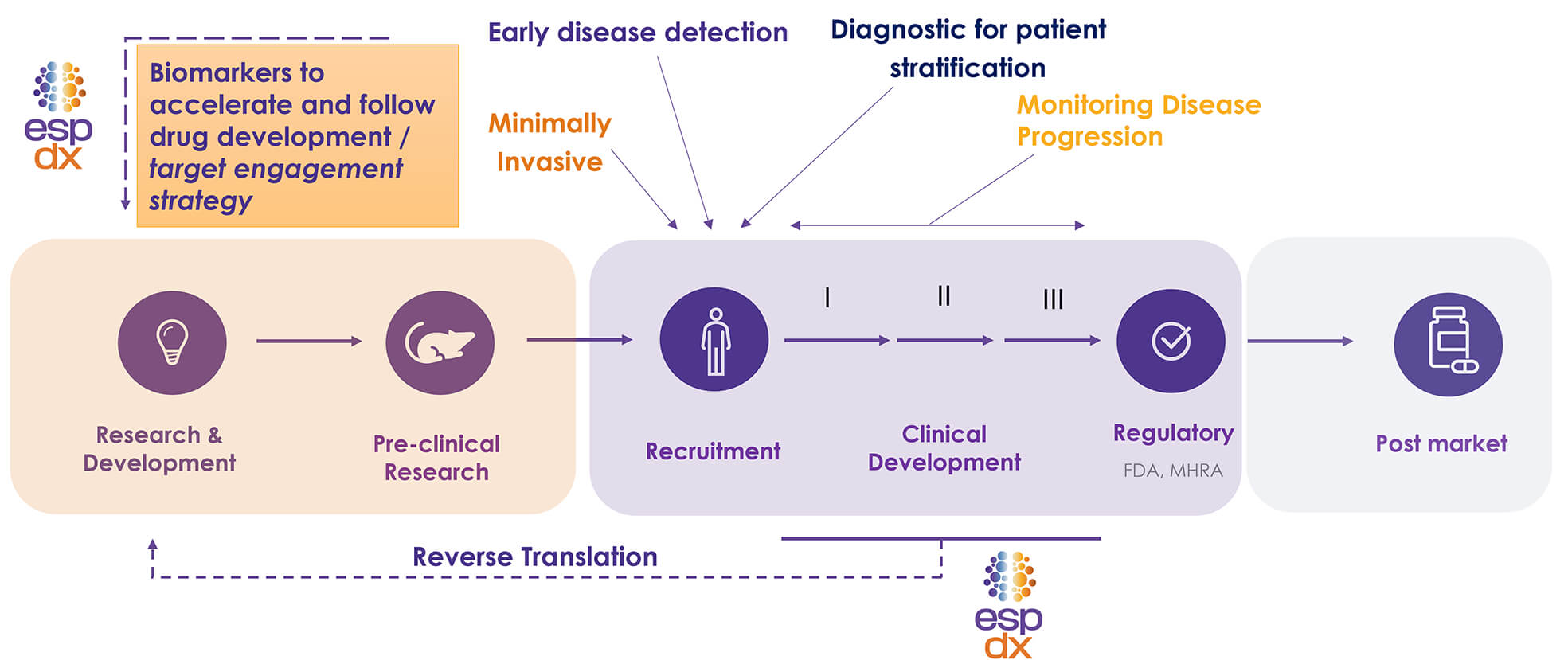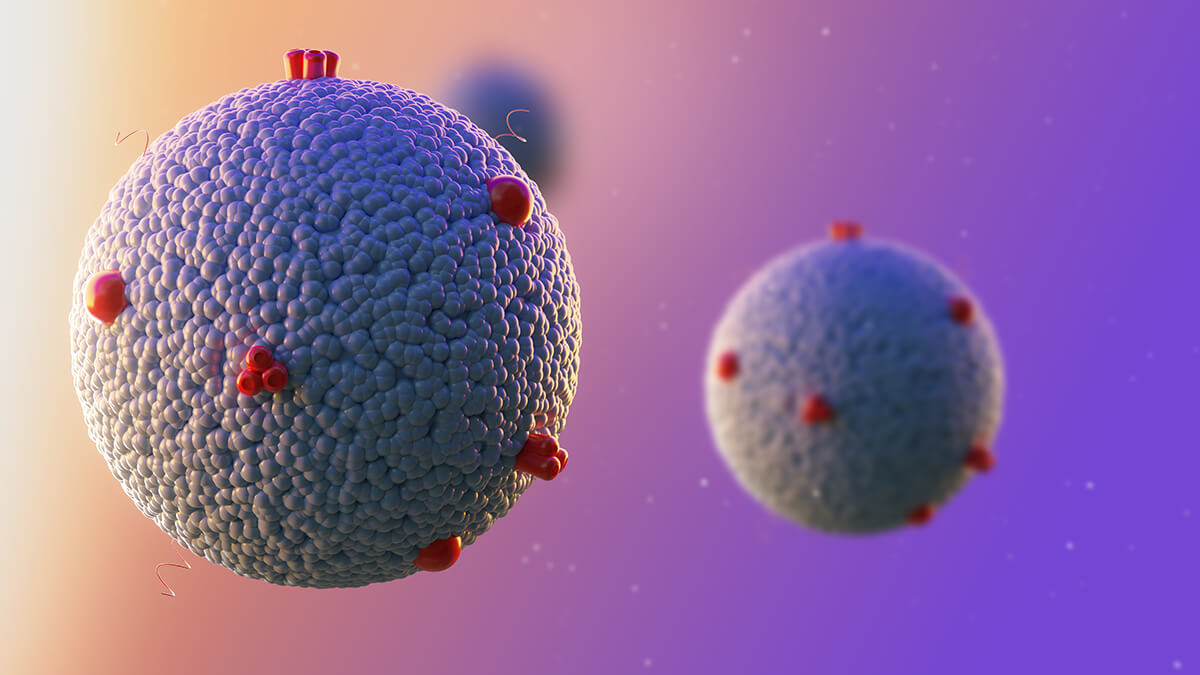Minimally invasive tests for the accurate diagnosis of Lewy Body Dementia and Parkinson’s Disease
Neurodegenerative damage begins years or even decades before disease symptoms develop. Currently, the diagnosis of neurodegenerative disorders is based upon often lengthy clinical assessment once symptoms are established and irreversible neuronal loss has occurred. Available diagnostic tools, such as PET scanning and cerebrospinal fluid (CSF) testing are expensive and invasive for the patient, and therefore not commonly used. Differentiating one neurodegenerative disorder from another is also challenging, due to the overlapping symptoms.
ESPDx is developing scalable liquid-biopsy tests based upon measurements of disease specific biomarkers in Extracellular Vesicles (EVs) purified from blood and saliva. Our technology provides superior sensitivity and specificity, allows detection of early stages of neurological disorders such as the Lewy Body Disorders (Parkinson’s Disease and Lewy Body Dementia) and a differential diagnosis of Alzheimer’s.
We can support Biotechnology and Pharmaceutical companies developing disease-modifying therapies in pre-clinical development, in stratifying patients for clinical trials, and in monitoring disease progression. Ultimately meaning that the right drugs can reach the right patients faster.
Adding value through the drug development process


For Clinicians
- Early interventions
- Improved patient management
- Correct medication

For patients
- Lifestyle adjustments
- Correct Medication
- Reduced anxiety

For Pharma & Biotech
- Patient stratification
- Track disease progression
- Surrogate clinical endpoints

About Lewy Body Dementia
Lewy body dementia is the second most common type of neurodegenerative dementia in older people. At least 10-15% of all people who live with dementia have Lewy body dementia.
The main features or symptoms of Lewy body dementia include: Cognitive impairment, visual hallucinations, fluctuations in attention, REM sleep disturbance and Parkinson’s symptoms.
Changes in memory are not always present earlier in the condition.
From www.lewybody.org



